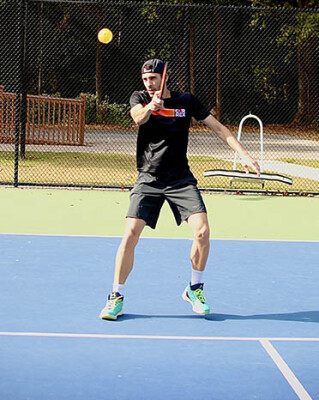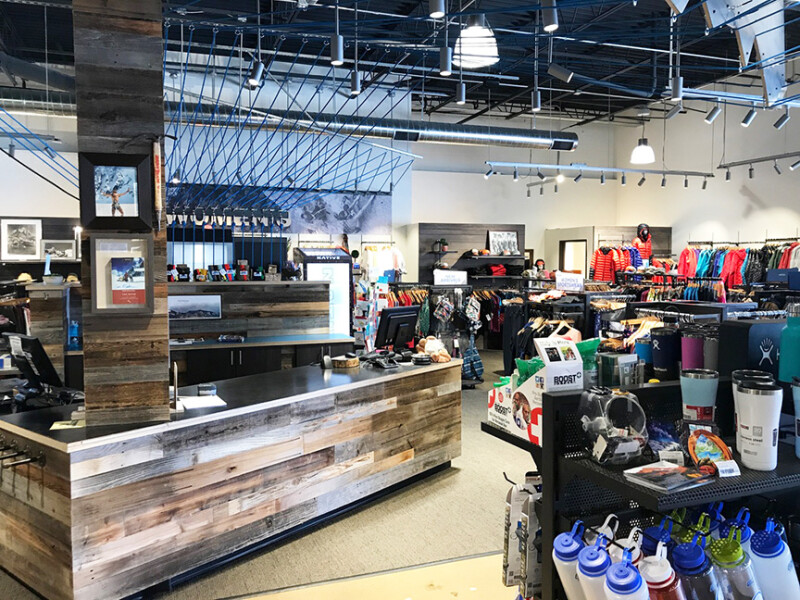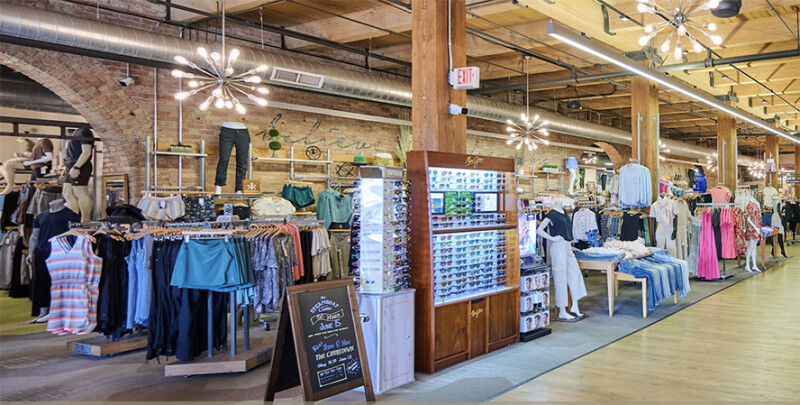When an activity becomes the fastest-growing sport in America it understandably demands some extra attention — and that’s exactly what pickleball will receive for the first time at The Running Event 2023. There will be a full-size pickleball court right on the show floor of the Austin Convention Center that will host two education seminars, product demos and maybe even a pickleball athlete or two — all designed to educate run specialty retailers on why and how they can add pickleball to their product mix.
The court and sessions are being sponsored by four brands making a name for themselves in the pickleball space – K-Swiss, Official Footwear Sponsor; Selkirk, Official Paddle and Ball Sponsor; OS1st, Official Sock Sponsor; and Currex, Official Insole Sponsor.
Running Insight gathered the sponsors into the kitchen (that’s a pickleball term, in case you didn’t know) for a Virtual Roundtable discussion on the potential of the sport at run specialty and how to take advantage of pickleball passion.
Sitting at the Table …
Kyle Whatnall, Senior Manager Public Relations/Content, Selkirk Sport
Dave Larson, VP-Marketing, K-Swiss
Josh Higgins, President, OS1st
Stephen Pifer, Director of Marketing, B2B, Foundation Wellness (Currex and PowerStep)
Let’s start with this: For those of our readers who don’t know about pickleball or haven’t played it yet, what’s so darn special about it?
Kyle Whatnall: Pickleball is more than just a sport. It’s a community and a passion. It’s one of the fastest-growing sports in the USA and its charm lies in its inclusivity, the camaraderie among players and the joy of play it offers to people of all ages.
Josh Higgins: It’s diverse, it’s inclusive, it’s easy to pick up for all ages and skill set. Most importantly, it’s a lot of fun.
Dave Larson: It’s easy to learn, it’s fun, it’s social and it’s addictive.
Stephen Pifer: Anyone who’s fascinated by the intrigue that is pickleball should go down to their local court and just watch people play the game. You’ll see the excitement, enjoyment and fun and get a feel for the community of pickleball that is somewhat similar to the running community. At the Sports Fitness Industry Association Conference I attended earlier this year one of the presenters said the recipe for a hot, new sport is that the rules must be easy to understand, the activity doesn’t require a high skill level to play and be a game that involves multiple people — so, we believe this sport is here to stay.
Now let’s get right to the heart of the matter: Why should run specialty retailers add pickleball to their product mix?
Higgins: Pickleball is an interesting sport and channel for shopping. Almost all of it is being done online or in big-box retailers. Product selection is minimal and generally pretty basic. This is typically an affluent customer. They want to stay active, stay healthy and play with better product. This doesn’t take up much space and adds a whole new demographic of customer.
Pifer: First, let me say that we support runners first and we are not experts in this category – we are rapidly learning about this hyper-growth sport. With that said, the number one reason is because it’s a great way to attract new customers to your store. We’re at a moment in time where we have a sport that is rapidly growing in participation, but there’s not a retail destination for consumers to learn more or purchase equipment. If run specialty retailers can apply their product knowledge and fitting expertise to pickleball, there’s a huge opportunity.
Whatnall: Given the incredible growth and mainstream adoption of pickleball, there’s a significant market out there hungry for quality products. By adding pickleball to their mix, run specialty retailers can tap into this demand, diversify their offerings and open up a new avenue for add-on revenue.
Larson: There is a lack of brick-and-mortar shops that sell tennis/pickleball. Run specialty retailers are experts at selling premium footwear and could easily sell top-end pickleball shoes. It is a way to add a new customer to shop in their store.
Is the pickleball player similar to these store’s typical running customer?
Higgins: Definitely! They are trying to lead a healthy lifestyle, remain active, make friends in groups and want to shop at a store that treats them special.
Larson: Yes, they are both active sports enthusiasts and have a passion to get better. They are also willing to spend money if a performance enhancement is perceived.
Pifer: Yes and no. There are some similarities in the sense that they both appreciate quality products, a knowledgeable staff and strong sense of community. Where I see some differences is that I could see people who primarily run, getting interested in and playing pickleball, while I’m not 100 percent certain people who exclusively play pickleball will be interested in becoming runners.
Whatnall: While there might be some overlap, pickleball attracts a broad demographic. However, like runners, pickleball players are passionate about their sport and seek out quality gear that will enhance their game.
Any similarities to other retail categories – such as golf pro shops – that are adding the category?
Whatnall: Just like golf pro shops, which cater to enthusiasts seeking premium equipment, pickleball retail can benefit from targeting both beginners and seasoned players. As much crossover between the sports exists at the club level, Selkirk Sport has strategic partnerships with Troon, the world’s largest golf club management company, and Invited Clubs, the largest owner and operator of private golf and country clubs in the United States. Both sports prioritize equipment quality, brand reputation and community engagement.
Pifer: We’re starting to see a few Golf Galaxy’s and PGA Superstores add pickleball sections, but in most cases those are self-service shopping experiences. What run specialty excels in is the personalized shopping experience and that’s the real competitive advantage that run specialty has over other retail players entering the space.
Higgins: While there are some independent family footwear stores that are entering the channel, no other retail compares to specialty run. Pro shops are very small and don’t offer the service levels of run specialty. They don’t understand the biomechanics of the lower extremities at the same level. There are specialty tennis shops in certain markets that could service this customer, but most are still not taking the sport seriously — tennis players can be snobby about pickleball.
Larson: Yes, in fact some golf retailers are already selling pickleball shoes.
What would be the challenges for retailers in adding some pickleball product and how do they overcome them?
Whatnall: Retailers might face challenges in understanding the game, its equipment nuances and the specific needs of players. Overcoming this requires training, partnering with trusted brands and engaging directly with the pickleball community to gather insights.
Larson: They will need to educate their customers on the specific needs of a pickleball player and how it differs from running, tennis or basketball. Stores should have someone on their staff who actually plays and understands the nuances.
Higgins: There was a problem with supply in the last year or so, but there are so many options now that I don’t see this as an obstacle anymore.
Pifer: Location and staffing. The challenges will vary depending on where your store is located. For many Northeast stores, the footprints tend to be smaller, so space is always a concern. For stores located in the Plains territory, is there a dense enough population of pickleball players that will probably justify bringing pickleball products into the store? There are a lot of case-by-case scenarios retailers will have to identify in order to decide if adding pickleball products is the right move for the business. Finally, retailers may need to consider adding some staff that are familiar with the sport, the gear and the community. That is what makes our channel so unique and retailers need to stay true to that point of difference versus big-box retail.
What would you suggest would be the first steps in adding the category?
Higgins: My general suggestion to running stores looking to get into the channel is to start slow. Add two-to-four shoes (two men’s, two women’s), two-to-four paddles in the $150-250 range and, of course, OS1st Pickleball Socks and compression.
Larson: Start with proven brands and their top-selling pickleball shoes. Don’t overbuy.
Pifer: The first step for adding the category would be to better understand the local market. Frequent your local pickleball courts, get to know who’s playing, how often and for how long. Learn their needs and what they’re currently missing and then make a decision on whether it make sense to enter the category and what is the appropriate offering based on that feedback.
Whatnall: Start with a diverse product mix, covering paddles for beginners to advanced players. Ensure a good mix of paddles, balls and accessories. Partnering with an established brand can provide guidance on quantities and popular products.
What merchandising tips would you offer to help the process along?
Higgins: Create a home for pickleball players in the store. Make sure the product is separated from the run product, have fun signage directing people to it. If you are fortunate enough to have some extra space, add an area for “dinking” practice, maybe buy a portable net for the parking lot.
Larson: Stock a commercial color and a color pop in both men’s and women’s. Stick to premium price points above $100 — let the customer go elsewhere to get an $80 shoe. Highlight the pickleball shoes in a separate area of the wall or store.
Whatnall: Highlight the uniqueness of the sport with interactive displays. Maybe set up a mini pickleball court or a demo area. Showcase testimonials or endorsements, especially from top professionals associated with trusted brands. The profitability it can offer with limited floor space is what makes pickleball particularly exciting for retailers.
Pifer: I would ensure that people know you are entering the sport. I have seen a few stores add a couple pairs of pickleball shoes, but there is no signage or information letting shoppers know these products are available. If the opportunity is large enough in your area, consider a dedicated space or area to highlight the offerings.
How would you suggest run retailers spread the word if they do start carrying pickleball product?
Pifer: I would start with in-store signage, emails to current customers and then social media could be a great way to get the word out quickly and reach a broader audience. One last thought is to sponsor local pickleball courts or tournaments to get the word out and show you are part of the pickleball community.
Whatnall: Host pickleball introduction events, collaborate with local clubs or ambassadors and use social media to announce the new addition. Sharing stories of people’s experiences with the sport can also resonate well.
Larson: Use social media, emails and in-store signage. Choose a kick-off date with a store party. Maybe serve some deli sandwiches with pickles.
Higgins: Reach out to the local Y and Rec centers. They will have tournaments or classes that are very inexpensive to sponsor. Make sure they know that you are the pickleball retailer in your market.
What will your message to TRE attendees be as they explore the pickleball court?
Whatnall: Embrace the growth and potential of pickleball. It’s more than just a product category — it’s a movement. Joining now can position retailers at the forefront of this exciting wave.
Higgins: My message will be the same as the past three years, as I was an early adopter and believer in this channel — Bring it in! Give this a shot, it’s super low risk and high reward. If other retailers don’t want this business, take it.
Larson: Learn what makes a pickleball shoe different and/or better than a running shoe. Try the sport on the demo court and learn how easy and fun it is.
Pifer: Take the Currex PickeballPRO insoles for a test drive. These insoles have been specifically engineered for pickleball and tested with professional players. We hope you love them as much as our testers have.
Finally, are you a pickleball player?
Whatnall: Absolutely! Once you play, you’re hooked. I have experience competing at all levels, as I began playing in 2020 and compete part-time on the professional tour, where I have been ranked in the Top 50 in men’s doubles! The energy, the community, the thrill of the game — it’s all too irresistible.”
Pifer: I am a runner first, but I have played pickleball and have been really impressed with the growth of this sport and the spirit of the community.
Larson: Yes, I play five times a week and some tournaments. I love it.
Higgins: I, admittedly, was one of those snobby tennis players. Those days are long gone. While I don’t get to play as much as I want to because of this dang job, I love the sport and hope 2024 puts the paddle in my hand more often.






